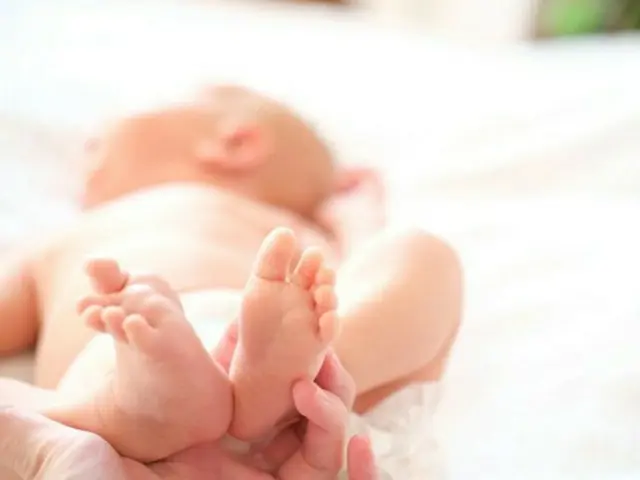Meanwhile, the French newspaper Le Monde introduced the ``no-kids zones'' that exist in stores and facilities in Korean cities, pointing out that ``It is no coincidence that Korean society is struggling with a declining birthrate.''
"No Kids Zones" are restaurants and facilities that prohibit infants from entering, and are said to have been established in South Korea since the early 2010s. Used in a restaurant
The move came about after the behavior of parents throwing away diapers and leaving their children to make noise in stores spread through social media, sparking a public backlash. After that, a store with a "No Kids Zone"
The number of such facilities has increased, and it is said that there are currently at least 500 such facilities in South Korea. The increase is due to a series of accidents in which children are injured at hotels and restaurants, and the stores and facilities are held responsible.
Part of the reason is said to be an attempt to avoid risk. In 2011, a child was burned at a restaurant in the southern city of Busan after colliding with a staff member who was carrying boiling water.
- was ordered to pay compensation of 41 million won (approximately 4.63 million yen at current exchange rates). Le Monde is the owner of a high-end Japanese restaurant in Seoul that has changed its store to a "no kids zone".
Introducing the voice. The store used to have chairs for infants, but children started making noise inside the store, so they decided to make the store a ``no kids zone.'' The owner said, ``High price
"There is a risk that it will cause inconvenience to other customers who pay a fee and expect the service they deserve," he said, explaining the reason for the change. The newspaper said, ``The no-kids zone phenomenon is affecting different categories of groups.
This is part of a broader movement to make a statement. "These phenomena are not conducive to mutual understanding or to promoting interaction between generations."
South Korea's ``Kids Zone'' phenomenon has been criticized by other foreign media as well.
It's here. Last May, the Washington Post, a US newspaper, published a related article stating that restricting children's access to public places would further emphasize the difficulties of raising children, leading to people being reluctant to give birth.
It was pointed out that there could be a connection. ``In South Korea, which has the lowest birth rate in the world, the issue of a 'no-kids zone' should be taken even more seriously,'' he said. CNN in the US also reported in June last year, ``South Korea has a very low birthrate.
``A paradoxical phenomenon is spreading, such as ``No Kids Zone'' businesses that prohibit young children from entering and exiting, while spending huge amounts of money every year to combat the spread of child abuse.''
He pointed out that South Korea's growing atmosphere of ``Zone'' is exacerbating the problem of extremely low birthrate and aging population. South Korea's birth rate fell below 2 for the first time in 1984, at 1.74. 1.1 in the 2000s
~1.3, and fell below 1 at 0.98 in 2018. South Korea is the only member country of the Organization for Economic Co-operation and Development (OECD) to have a birthrate below 1. It will continue to slow down after 2018
It was 0.84 in 2020, 0.81 in 2021, 0.78 in 2022, and last year it hit a new low of 0.72 (provisional value announced on the 28th).
In South Korea, the new academic year will start in March, and Yonhap News reported on the 26th, ``The number of elementary school enrollees in 2024 is expected to fall below 400,000.'' Less than 400,000 people
It's my first time. According to Yonhap, based on interviews with the Ministry of Education (the Ministry corresponds to the Ministry), the number of students scheduled to enroll in elementary schools this year is 360,000,9441, compared to last year's number of first-grade students of 400,017.
The number is below 52 (as of April 1st). There are a total of 157 elementary schools (as of the 20th of this month) that have no children scheduled to enroll. Children born in 2017 will be entering elementary school this year.
The number of births that year was 357,771, more than 48,000 fewer than the previous year. The number of elementary school enrollees dropping below 400,000 for the first time clearly reflects the serious reality of the declining birthrate in South Korea.
. It was in the early 2000s that the declining birthrate emerged as a major social issue in South Korea. The Roh Moo-hyun administration, which was inaugurated in 2003, began to take serious measures to combat the declining birthrate.
Became. The current government of President Yoon Seo-gyul (Yun Seok-yeoul) is also making efforts to counter the declining birthrate by building low-rent public housing and accepting immigrants, but the declining birthrate is not being stopped at all. each
Along with the seed policy, we also need to discuss the nature of ``no-kids zones''.
2024/02/29 11:52 KST
Copyrights(C)wowkorea.jp 5

